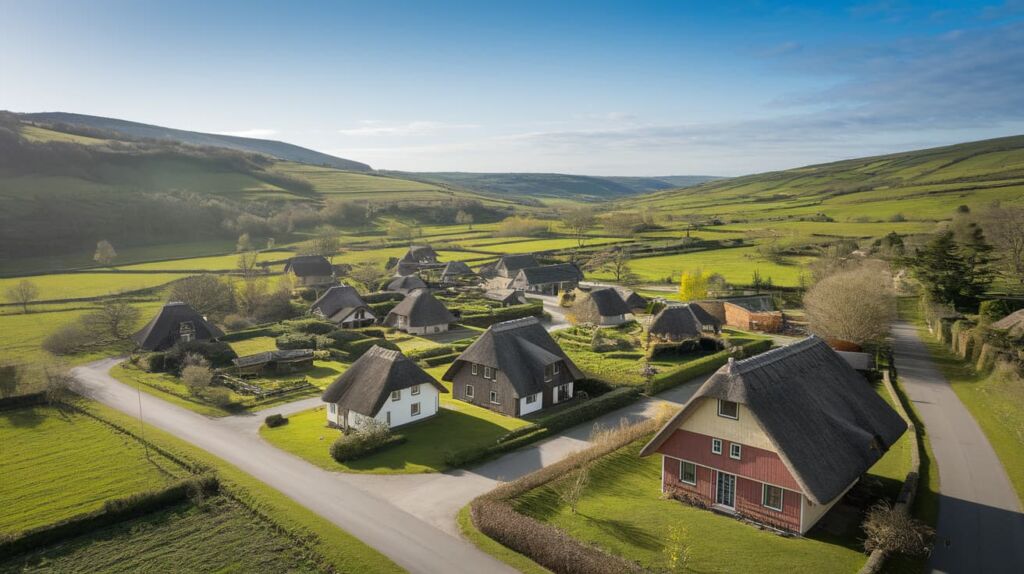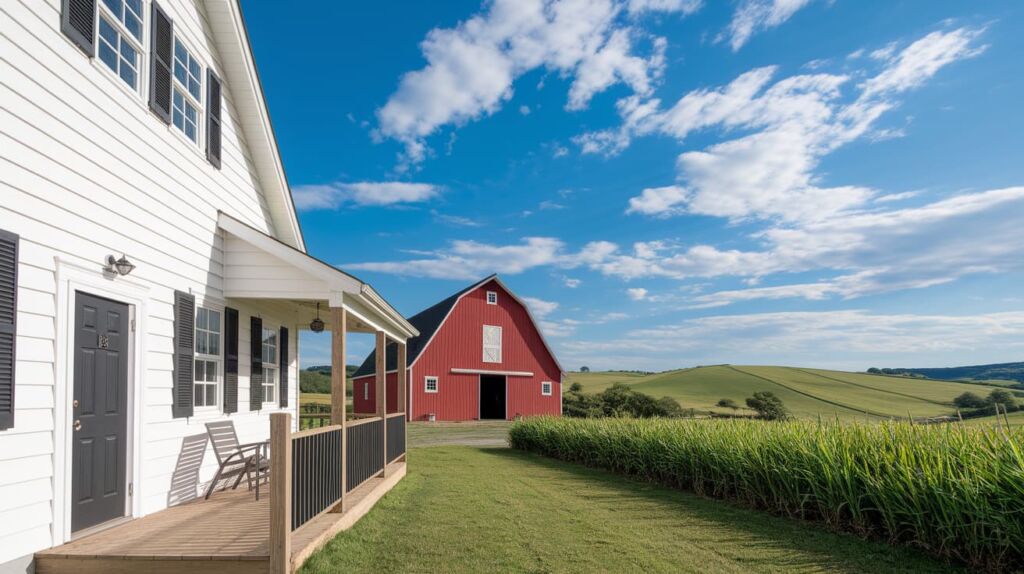Investing in rural land has become an increasingly attractive option for individuals looking to diversify their portfolios, escape urban congestion, or capitalize on the growing demand for agricultural and recreational properties. Unlike city real estate, rural land investments offer unique advantages, such as lower entry costs, greater flexibility in land use, and long-term value appreciation.
However, purchasing rural property requires careful planning and an understanding of market trends, legal considerations, and potential risks.
In this article, we’ll explore the key aspects of investing in rural land, including why it’s a valuable investment, factors to consider before buying, the financial benefits, and potential challenges. Whether you’re looking to build a homestead, lease farmland, or simply hold the land as an appreciating asset, this guide will help you make informed decisions.
Why Rural Land is a Valuable Investment?

Rural land offers distinct advantages that make it a compelling investment choice, whether for personal use or as a long-term financial asset.
- Lower Initial Costs – Compared to urban real estate, rural land is often significantly cheaper per acre. This makes it accessible to a wider range of investors.
- Appreciation Potential – As cities expand and demand for land increases, rural properties can appreciate in value over time, especially in areas with planned infrastructure improvements.
- Diverse Uses – Rural land can be used for a variety of purposes, including agriculture, recreational activities, conservation efforts, or residential development.
- Lower Property Taxes – Many rural properties have lower tax burdens compared to city real estate, making them more affordable to maintain.
- Opportunity for Self-Sufficiency – Those interested in sustainable living can use rural land for farming, livestock, or off-grid living.
- Privacy and Space – Rural properties provide ample space for personal projects, business ventures, and lifestyle choices without the limitations found in urban settings.
- Potential for Renewable Energy Projects – With ample open land, investors can explore solar or wind energy projects, contributing to sustainability while generating additional income.
The flexibility and affordability of rural land make it an appealing option for both experienced and first-time investors looking to secure tangible assets.
Key Factors to Consider Before Buying Rural Land
Before purchasing rural land, it’s crucial to evaluate several factors that can impact the investment’s success and usability.
- Location and Accessibility – While rural land is often remote, ensuring it has road access and proximity to essential services can affect its value and usability.
- Zoning and Land Use Regulations – Different parcels may have restrictions on agricultural, residential, or commercial activities. Researching zoning laws is essential before purchasing.
- Soil Quality and Natural Resources – If you plan to use the land for farming, soil fertility and water availability are key considerations.
- Infrastructure and Utilities – Check whether the land has access to electricity, water, and sewage systems. If not, installation costs should be factored into the budget.
- Environmental and Climate Considerations – Certain regions may be prone to floods, droughts, or other environmental risks that could impact land use and value.
- Potential for Development – Some investors purchase rural land with the intention of reselling after infrastructure improvements or rezoning efforts increase demand.
- Local Economic Growth – Researching nearby towns and cities can provide insight into whether the area is growing or declining, impacting future land value.
- Existing Land Rights and Easements – Ensure there are no legal disputes, access easements, or conservation restrictions that could hinder development or use.
By conducting thorough due diligence before purchasing, investors can avoid unexpected challenges and maximize their land’s potential.
Financial Benefits of Investing in Rural Land
Beyond the initial purchase price, investing in rural land comes with financial advantages that can lead to long-term wealth-building opportunities.
- Appreciation Over Time – Historically, land values tend to increase, especially as urban sprawl extends outward into rural areas.
- Rental and Lease Opportunities – Owners can lease land for agricultural use, hunting rights, or recreational purposes to generate passive income.
- Government Incentives – Some rural investments qualify for tax breaks, conservation grants, or agricultural subsidies that can offset ownership costs.
- Low Maintenance Costs – Unlike rental properties that require upkeep, vacant land has minimal maintenance expenses, making it a cost-effective investment.
- Potential for Subdivision and Sale – Larger tracts of land can be divided and sold in smaller parcels at a profit, particularly in areas experiencing growth and development.
- Timber and Natural Resource Sales – Some rural properties have valuable timber or mineral rights, providing an additional revenue stream for investors.
- Recreational and Tourism Income – Investors can develop hunting lodges, campgrounds, or eco-tourism businesses that attract visitors and generate revenue.
- Agricultural Ventures – If managed correctly, rural land can be used for profitable farming operations, livestock breeding, or specialty crops.
The financial benefits of rural land investments are often overlooked, but they can provide steady income and long-term appreciation, making them a valuable asset class.
Challenges and Risks of Rural Land Investment

Despite its many benefits, investing in rural land also comes with challenges that investors should be aware of before making a purchase.
One of the primary challenges is limited immediate liquidity. Unlike urban properties, rural land does not always have a high volume of buyers, which can make it harder to sell quickly. Investors must be prepared for a longer holding period before seeing returns.
Additionally, infrastructure costs can add up quickly if the land lacks essential amenities like roads, electricity, or water access. Developing these utilities can require a significant investment, which may impact profitability.
Another important consideration is zoning restrictions and legal issues. Some properties may have easements, conservation restrictions, or disputes over land rights that limit their potential uses. Investors should thoroughly investigate local zoning laws and property history to avoid any legal complications.
Additionally, market demand variability can influence land value, as economic conditions, agricultural trends, and regional development plans all play a role in determining long-term appreciation.
Environmental factors also present potential risks. Issues like soil contamination, flood risk, or endangered species regulations can limit land use or affect resale value.
Furthermore, rural properties may require ongoing wildlife and pest control, as unmanaged land can attract invasive species or pose challenges for agricultural use. These environmental considerations should be assessed before finalizing a purchase.
Lastly, financing rural land can be more challenging than securing a mortgage for residential or commercial properties. Many traditional lenders do not offer standard loans for vacant land, requiring investors to seek alternative financing methods or make higher down payments. Additionally, seasonal accessibility can be a concern, as some properties become difficult to reach during certain weather conditions, affecting usability and potential resale value.
By understanding these risks, conducting thorough research, and planning accordingly, investors can mitigate potential downsides and make informed decisions.
Conclusion
Investing in rural land presents a unique opportunity for those looking to diversify their assets, create passive income, or establish a long-term investment. With lower upfront costs, flexible usage options, and strong appreciation potential, rural land can be a rewarding investment for individuals willing to conduct thorough due diligence.
However, like any investment, it comes with its own set of challenges, including zoning restrictions, infrastructure limitations, and liquidity concerns. By carefully considering location, intended use, and financial goals, investors can make informed choices that maximize the benefits of rural land ownership.
Whether you’re buying for personal use, business opportunities, or speculative investment, rural land remains a viable and promising option for building wealth in the long run.
Ginis Garcia is a seasoned real estate investor with over 14 years of experience helping both new and experienced investors achieve their goals in the housing and land markets.
- Ginis Garciahttps://thelandmethod.com/author/thelandmethod/
- Ginis Garciahttps://thelandmethod.com/author/thelandmethod/
- Ginis Garciahttps://thelandmethod.com/author/thelandmethod/
- Ginis Garciahttps://thelandmethod.com/author/thelandmethod/


